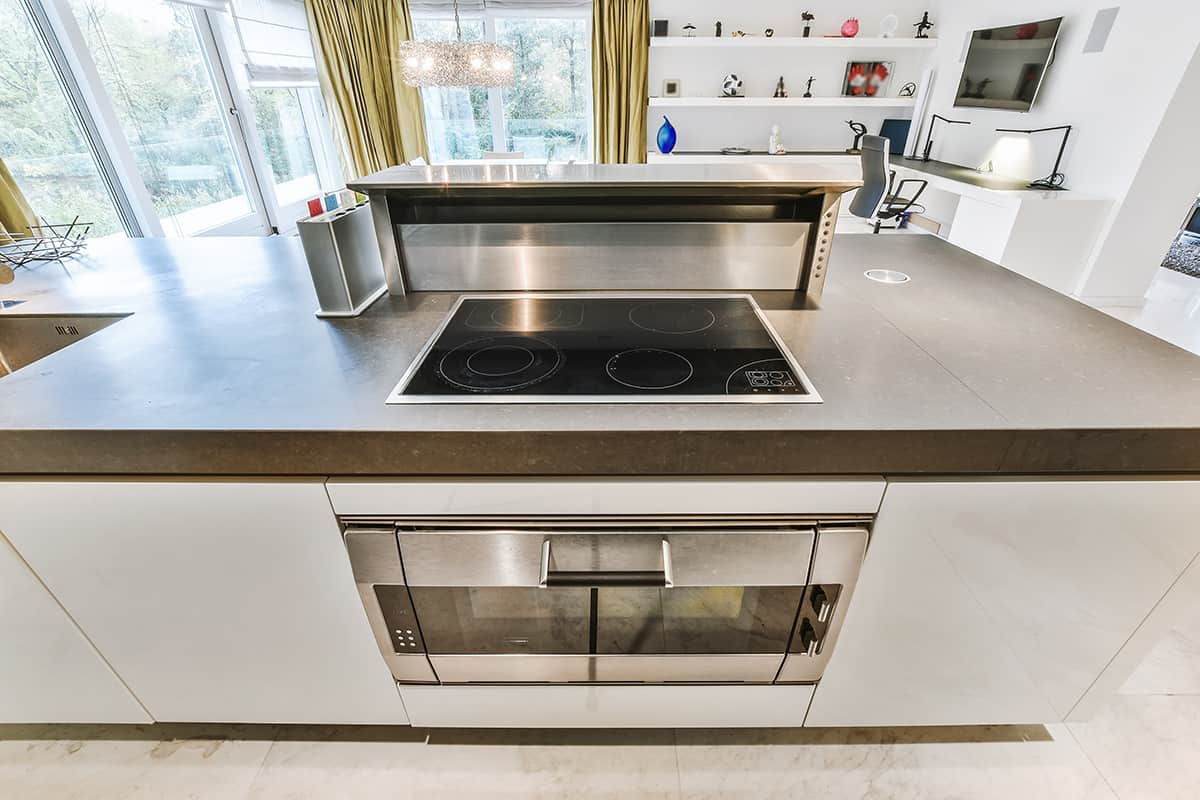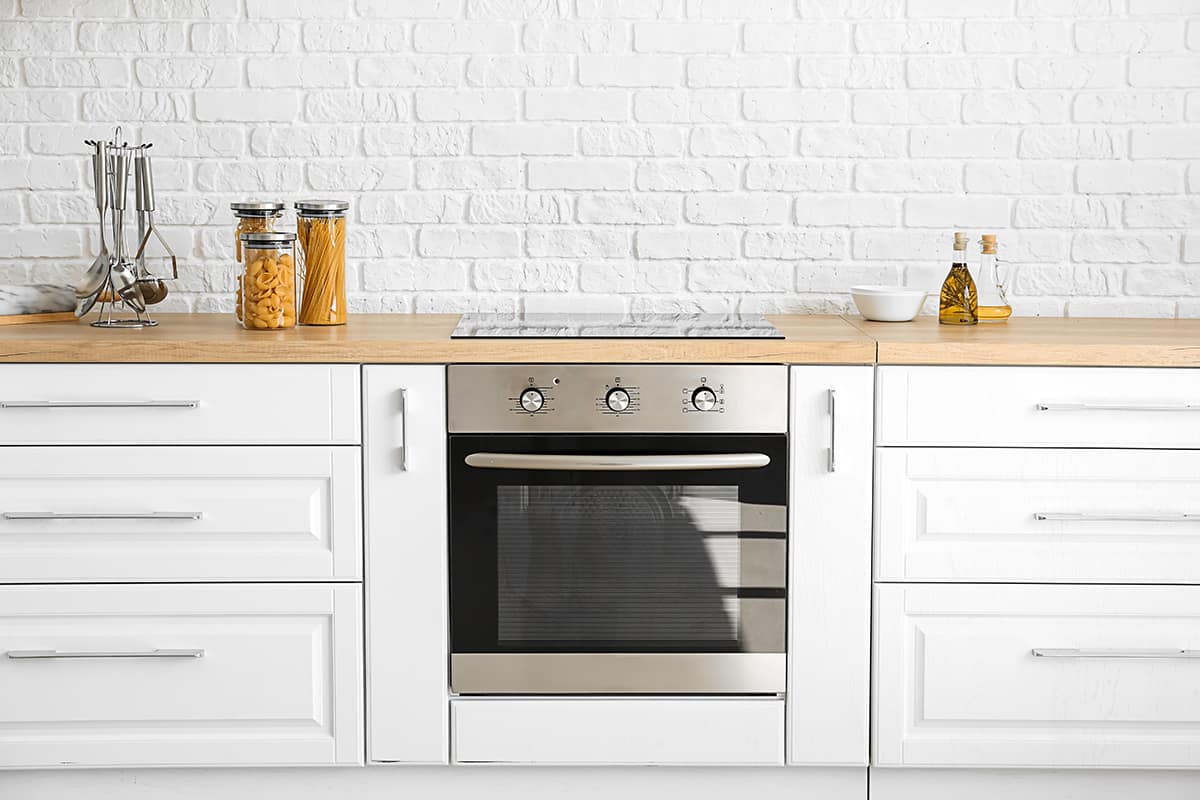Not many can tell a gas oven apart from an electric oven by looks alone. Whether you’re shopping for an oven or thinking of purchasing a home with a fully furnished kitchen, you should be able to tell if the oven uses gas or electricity.
You can tell whether an oven is gas or electric by looking for the following indicators:
- Stovetop burner type
- Pilot light
- Gas valve
For the remainder of this brief guide, I’ll explain in more detail how to tell gas ovens apart from electric ovens, how they differ from each other, and how to choose between them.
How to Tell If Oven Is Gas or Electric
At a glance, especially when facing it head-on, it can be difficult to tell whether an oven uses gas or electricity as a source of fuel. They look almost identical in every way, and opening the oven won’t be of much help either.
However, there are a few indicators you can look for to determine whether you have a gas or an electric oven. Those indicators are as follows:
1. Stovetop burner type

If the oven is a part of the stove, which is known as a range, then try looking at the stovetop burners. Gas ranges will have porcelain-coated cast-iron grates. Electric ranges, on the other hand, either use coils or have a flat, shiny top.
2. Pilot light
A pilot light is a flame that remains on indefinitely to ignite the flow of gas entering the appliance. You can locate the pilot burner by opening the bottom cabinet on the gas range. Electric ranges do not have pilot lights since electricity heats up coils built into the oven. The exception to this rule is if your gas oven has an electric ignition system (more on this in a bit).
3. Gas valve
Finally, if you inspect the backside of the oven, a gas valve will indicate that you have a gas oven. It is supposed to connect to your home’s gas supply line. Electric ovens have no need for gas valves since they draw power from a wall outlet.
Are There Gas-Electric Ovens?
Yes, there are.
A gas-electric oven is a gas oven that has an electric igniter. After plugging the unit into a wall outlet, the electricity can be used to create a spark, which ignites the influx of gas when you turn on the oven. This eliminates the need to have a standing pilot.
When you turn on a gas-electric oven, you will usually hear a constant ticking noise. That noise indicates that the electric ignition system is continuously producing sparks in the hopes of igniting the flow of gas. The igniter will immediately stop making sparks when the burner(s) are on.
The good news is that you do not need to plug in the oven. If the unit has a pilot burner in the bottom cabinet, you can still use it during power outages. However, the electronic control board with a built-in clock and timer will not function.
You should also know that there are dual-fuel ranges. In such ranges, the oven is powered by electricity, while the stove uses gas to produce an open flame.
Gas vs. Electric Ovens

Now that we know how you can tell gas and electric ovens apart let’s briefly discuss the major differences between them. I’ll explain how they differ point-by-point below.
Heat Distribution
Heat distribution refers to how evenly the oven cooks food. It’s determined by the location and heating intensity of the burners or coils.
Gas ovens are generally less efficient in terms of heat distribution. Their burners are located at the bottom, and heated air floats upward. Electric ovens usually have coils built into the bottom and sides of the oven, allowing for more even cooking.
Heating and cooldown times
Gas ovens tend to heat up more quickly since they use open flames to heat up the small baking cavity. Electric ovens, on the other hand, heat up more slowly since it takes time for the coils to come up to temperature.
The same applies to both appliances in terms of cooldown times. The moment you shut off the flow of gas, the oven will immediately begin to cool down. In electric ovens, shutting off the flow of electricity to the coils doesn’t immediately cool them down. It can take just as long for the coils to return to room temperature as it took them to heat up.
Temperature control
You’ll have a much easier time increasing and decreasing the temperature of your gas oven as than you would on an electric oven. This is because the control dials regulate the size of the open flames, which will have an instant effect on cooking temperatures.
In electric ovens, it takes more time for the coils to heat up and cool down, so there’s a greater risk of overcooking food.
Price and operating costs
When you take a look at brand-new ovens, you’ll notice that gas ovens are slightly more expensive than their electric counterparts. However, since gas tends to be cheaper than electricity in most places, you can save money in the long run.
Moisture
Something many people don’t consider is the moisture produced when natural gas is ignited. This isn’t a bad thing, especially if you want your oven to produce a bit of steam when baking. The steam can help keep meats juicier.
Electric ovens produce dry heat via the heating coils. This can help with crisping up vegetables and pastries. However, you can try adding a cup of water into your oven when baking to produce steam.
Safety
Both appliances can be dangerous when they’re not maintained properly, but gas ovens are usually a shade more dangerous since the gas supply line can leak at any time. Not only that, but you also have to think about the condition of the oven’s gas valve and whether or not it needs to be fixed or replaced.
As for electric ovens, they’re generally safer since abnormal currents can be controlled via a GFCI outlet or breaker. In the event your oven shorts or the electrical workings come into contact with water, the outlet will immediately shut off the flow of electricity, and you’ll have to manually restore power to it.
Gas and Electric Ovens Pros and Cons
Here’s a quick summary of the upsides and downsides of each oven type.
Gas Oven Pros:
- Instant heat
- Quicker heating and cooldown times
- Better temperature control
- Cheaper to operate
- Food can be juicier
Gas Oven Cons:
- Less efficient heat distribution
- Unavoidable moisture
- Higher purchase price
- Risk of gas leaks
Electric Oven Pros:
- More even heat distribution
- Better for crisping food
- Lower upfront cost
- Generally safer
Electric Oven Cons:
- Longer heating and cooldown times
- Difficult temperature adjustments
- More expensive to operate
Should You Get a Gas or Electric Oven?
Now that we have a basic understanding of how gas and electric ovens differ from each other, it’s time to decide which oven type to get.
The most important thing you need to figure out is whether or not your home has a natural gas supply line. If it doesn’t, then you can rule out gas ovens altogether.
Of course, if possible, you can contact your local gas company and have them install a gas line to your home, but you should be prepared to fork over thousands of dollars for the service. Again, gas can be cheaper than electricity, so the upfront investment may be worth it in the long run.
Electric ovens, on the other hand, may have higher installation costs, especially if you want to purchase a wall-mounted oven. You may have to spend hundreds of dollars to get the oven professionally mounted in your kitchen if you don’t have the know-how to do it on your own.






